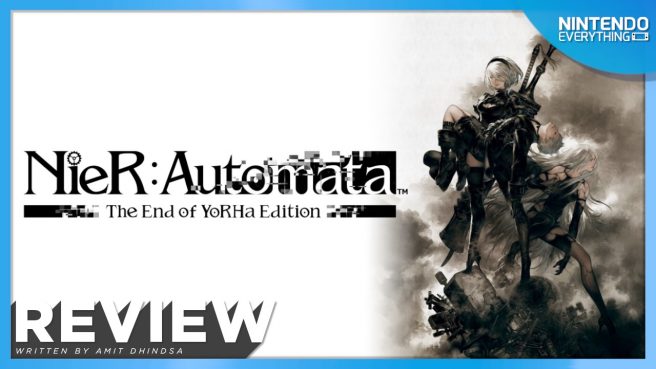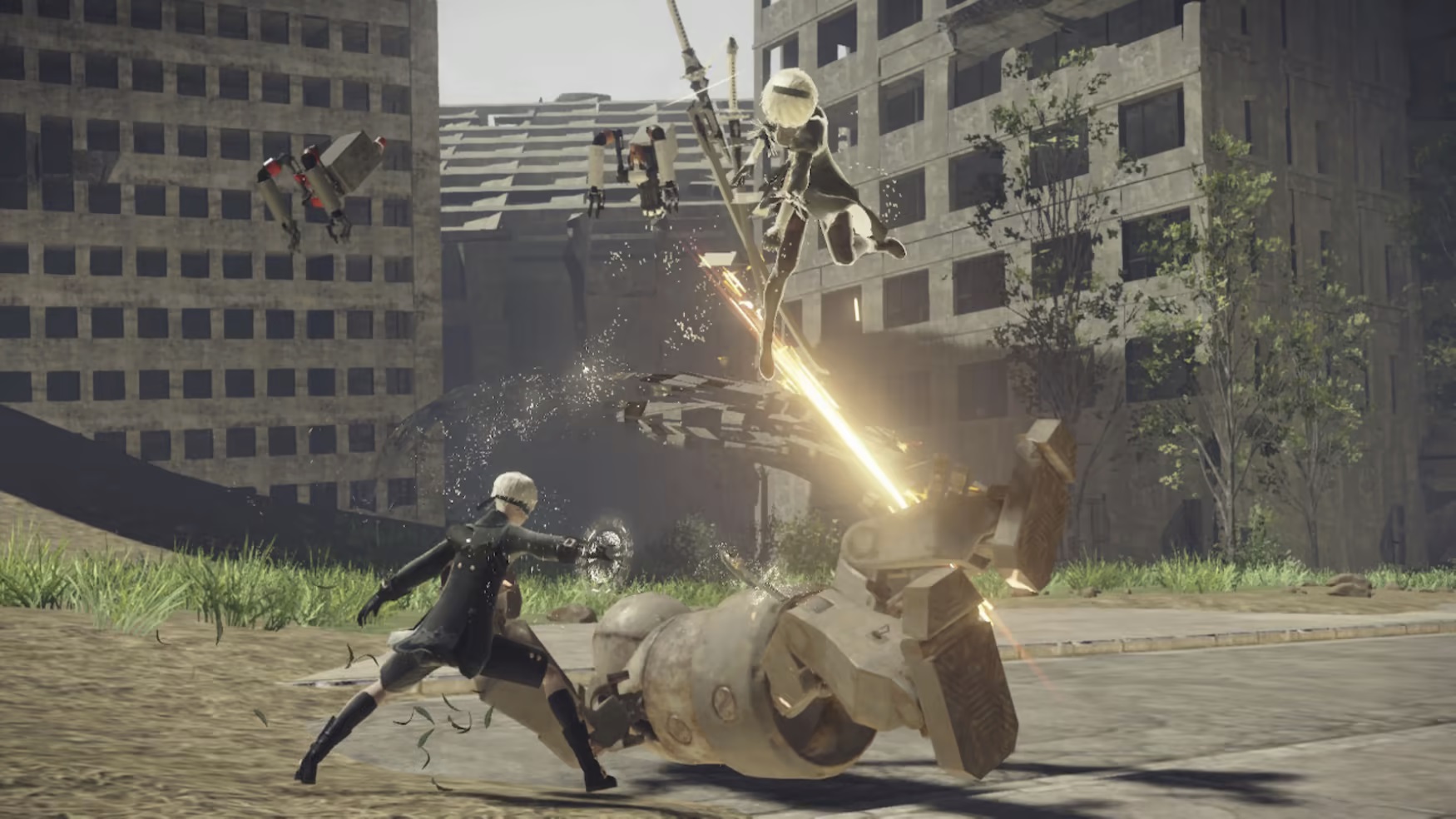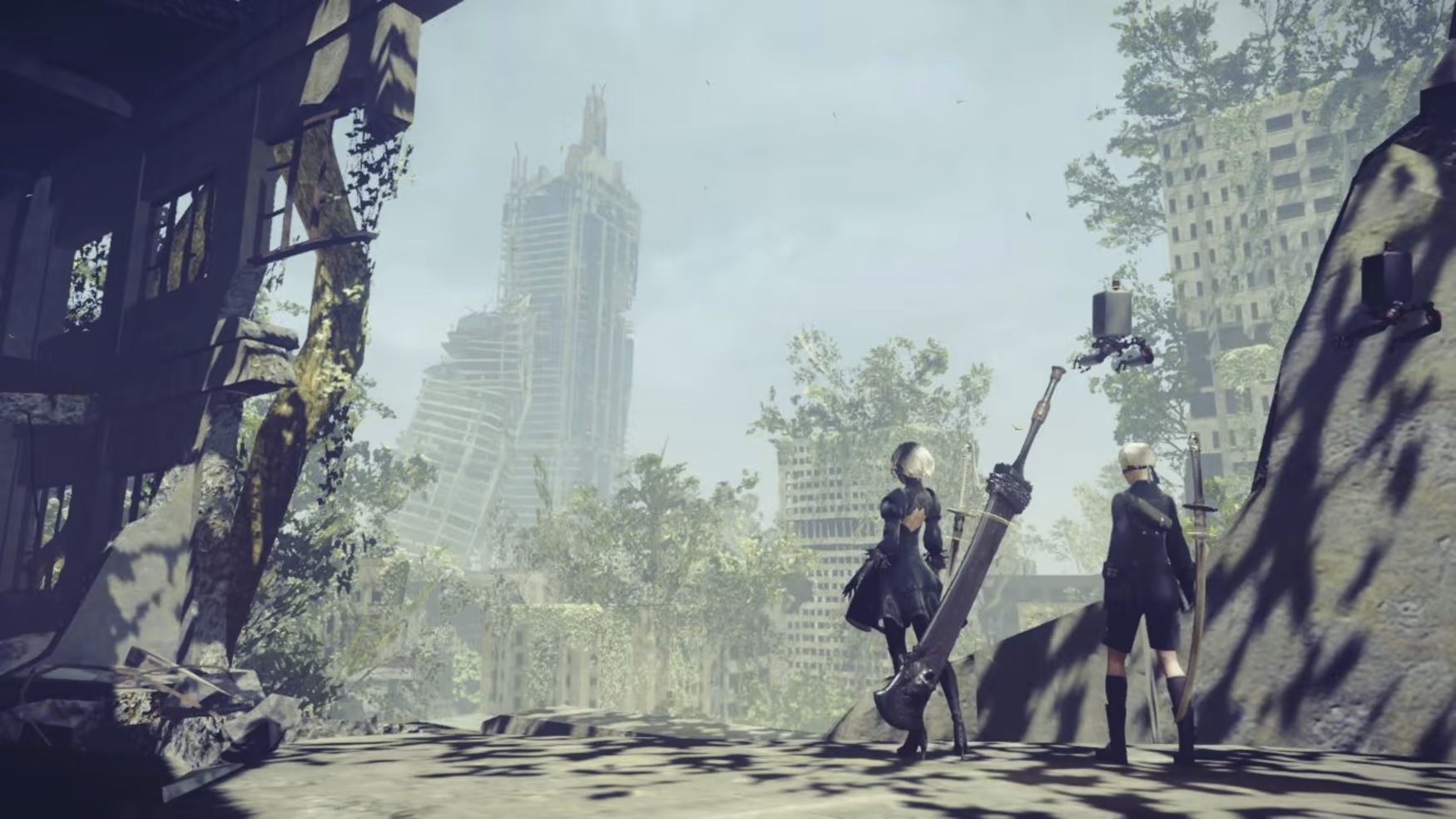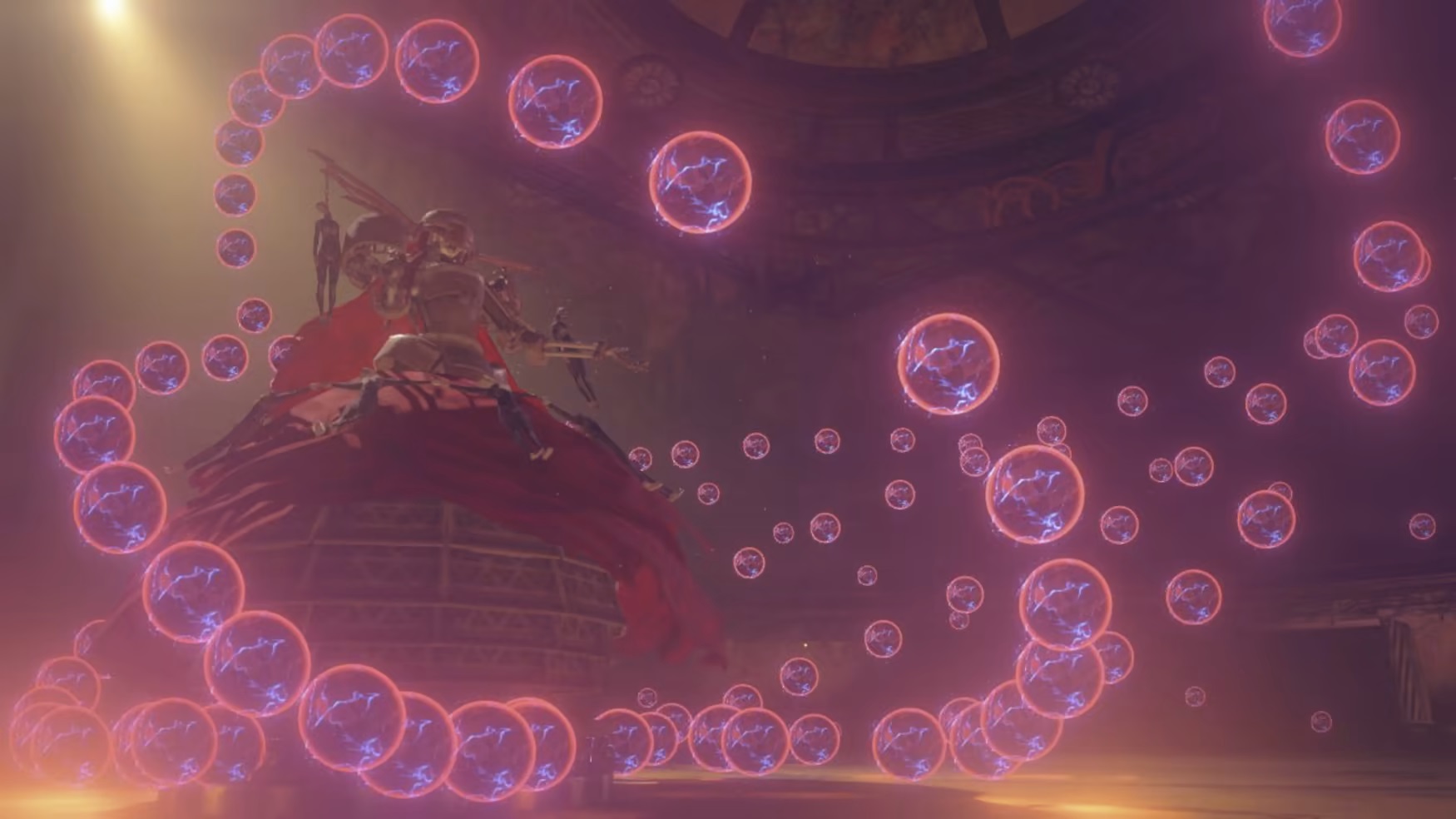[Review] NieR: Automata The End of YoRHa Edition
System: Switch
Release Date: October 6, 2022
Developer: PlatinumGames
Publisher: Square Enix
NieR: Automata has always shared something of a connection with Switch. When asked by Famitsu what his thoughts were on the system and its reveal presentation in January 2017, director Yoko Taro simply stated his memories vanished once he found out the console, along with Breath of the Wild, were releasing just one week after his game. Launching alongside such a titanic duo didn’t end up holding NieR: Automata back in the end, however, as it was both a critical and commercial success, leading to it becoming one of the most requested Switch ports of the last generation. More than five years later, the game has finally arrived on Nintendo’s platform, and this gripping tale of android vs. machine was certainly worth the wait.
NieR: Automata’s story begins with an android, 2B, at the start of a mission on a post-apocalyptic earth overrun by machines created by alien invaders. After seeing her comrades quickly fall one-by-one, a cold and dispassionate 2B takes command of the mission as the lone survivor. Supporting her from afar is another character central to the story, the comparatively jovial 9S, a fellow android from the YoRHa corps. After a spectacular end to their mission, it’s revealed that the human race was forced to seek refuge in space thousands of years ago, as the seemingly never-ending war between the androids created to protect humanity and the robots created to fight them nearly wiped out the human species. 2B’s objective, along with the rest of her android compatriots in YoRHa, is to end this ceaseless battle against the machines once and for all and restore glory to mankind.
Central to the narrative of NieR: Automata are themes such as one’s identity, the bonds between people, and what characteristics make someone “human,” but that’s just the tip of the iceberg. The title truly delves into themes that most other video games wouldn’t attempt, or at the very least, not with as much finesse as this story does. At the risk of perhaps giving the game and its director too much credit, even when it’s seemingly heavy handed with some of its messaging, one can’t help but wonder if even that is intentional. One thing is certain, however; almost every decision related to the game and its narrative is deliberate, even with the story’s winding nature.
Stating that NieR: Automata has multiple routes almost understates the importance of reaching its various endings. Route A leaves you with more questions than answers or really, just questions, period. The endings form one cohesive narrative, and the routes are a device for one overarching story than truly different scenarios like the multiple paths in something like Fire Emblem: Three Houses. Fortunately, however, the time investment to see the game’s many routes is significantly less than it is in Three Houses as well: Route A can easily be completed in 10 hours or less, and the cumulative total of all the endings will land in the 30 to 40 hour mark for those mainly interested in the story.
If nothing else, the combat in NieR: Automata offers variety. Scraps between 2B and her robot nemeses typically take place in 3D environments, but some parts of the game will switch to 2D action RPG combat as well. In either case, 2B is backed up by a Pod machine, which fires projectiles and special attacks while 2B simultaneously unleashes light and heavy attacks with her melee weapons. Between both methods of attack, moving around the battlefield, and evasive maneuvers such as jumping and dodging, the amount of inputs involved can become demanding, especially given how frenetic the combat is. The easy difficulty setting alleviates this to some degree by offering a host of quality of life options, such as chips which will automatically fire the Pod partner’s attacks.
Installable chips are the main method of improving characters’ attributes in NieR: Automata aside from the traditional RPG leveling system. Chips grant various boons such as boosting attack and defense, regenerative properties, and increasing experience points and drop rates but also allows players to customize aspects of the game’s HUD by adding or removing elements such as the mini-map, HP gauge, and damage values. Each chip has a cost associated with it, and only a certain combined value of chips can be installed by 2B at once.
Complementing the core gameplay are shoot ‘em up sections which appear frequently to break up the pace of the traditional action RPG combat. These aerial battles in 2D are standard fare for the genre: 2B’s mech has a regular attack, special attack, and the ability to dodge, but what adds a little twist is a periodic transition to a different plane, which allows enemies and attacks to come at her from all angles and adds a melee weapon for 2B’s mech to the mix.
Despite the variations in its gameplay, NieR: Automata’s combat feels more style than substance. The action RPG battles lack depth, and much of the time, simply maintaining distance and blasting away at enemies with the Pod companion will whittle down their forces. The standard shoot ‘em up sections don’t offer much of a challenge, and the battles in the alternate plane can often be cleared by mashing the melee attack in all directions. In both cases, the difficulty of the combat is often determined by the sheer volume of enemies and attacks on screen, and whether or not one is successful comes down to how well they can herd the crowd rather than studying the enemy or fully utilizing the game’s mechanics.
All that said, even if the action does lean heavily on style, NieR: Automata boasts plenty of it. Unleashing attacks looks cool, moving around feels great, and the boss battles are spectacular set pieces. The depth of the combat is not the game’s strength, but it doesn’t need to be either: at the end of the day, the game’s narrative is the main draw and the entire adventure is short enough that the action never truly feels rote.
What really elevates the narrative of NieR: Automata in lieu of the combat is the audio-visual package. While the open world aspect of the game doesn’t add much functionally, it successfully delivers the feeling of a post-apocalyptic, war torn earth devoid of human life with its visual design featuring once populous cities now now overrun by desert sands or overgrown vegetation. The visual quality of the Switch version can seem muddy at times, but on the whole, it is still one of the most impressive looking games on the system, both in handheld and docked mode. Combine that with a generally stable frame rate with only few noticeable hiccups along the way (mostly limited to the most elaborate battle sequences in the game), and overall, the Switch version feels like a good one. The soundtrack is absolutely phenomenal and a perfect pairing to the world design and game’s tone as well.
The Verdict

NieR: Automata is a truly singular experience. Given the well known auteur nature of its director, that shouldn’t come as a surprise, but it’s one thing to steadfastly chase a vision and another for it to lead to something so different yet enthralling. The narrative is evocative and its themes permeate even minute details of the game, which is impressive both for the way it enhances the plot and the dedication it shows to holistic storytelling. While the combat isn’t the game’s strength, it doesn’t need to be, and the flashy action doesn’t detract from the adventure given its relatively modest length (even taking the multiple routes into account). The visuals and particularly the soundtrack are what really elevate the experience, however, making it a fantastic overall package. Perhaps it’s long overdue, but in this case, it’s certainly better late than never. NieR: Automata is finally on Switch, and it’s truly worth experiencing.
NieR: Automata The End of YoRHa Edition copy provided by the publisher for the purposes of this review.



